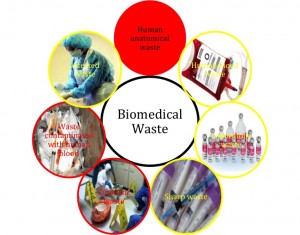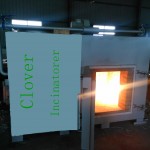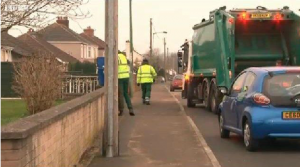The role of municipal governments is important in the proper local management of solid waste. Under the Nunavut Land Claims
Agreement, municipalities are entitled to control their own municipal disposal sites. Local environmental and safety
standards are determined, in part, by how the land is designated under municipal government development plans (i.e. land use
zoning). Solid waste may be deposited into municipal landfill sites only with the consent of the local government. The local
fire department may also be called upon if a fire or other public safety issue is identified.
Solid waste incinerators are engineered systems that are capable of routinely achieving burn temperatures in excess of 1000oC
and a holding time of at least one second. Properly designed and operated incinerators are able to effectively and safely
destroy a wide range of waste. Only incinerators designed for burning mixed municipal solid waste are discussed in the
guideline. The incineration of
hazardous and biomedical waste and sewage sludge requires specific equipment, operational controls and training that are
beyond the scope of the current document.
There are four basic types of incinerators. They vary based upon the number of burn chambers they have, the amount of air
provided to each chamber and how waste is fed into the primary burn chamber.
Dual-Chamber Starved The primary burn chamber receives less air than is needed to achieve full
Air System combustion. Gases from this incomplete combustion then pass into a second burn chamber where sufficient air
is injected and complete combustion is achieved.
Single Chamber Excess More than a sufficient amount of air (as much as 50% more than the amount
Air System of air needed) is injected into the single burn chamber to achieve complete combustion of the waste.
Continuous Feed An incineration process that is in a continuous burn cycle. A continuous feed
Incinerator incinerator operates without interruption throughout the operating hours of the facility by having waste
continually added to the primary burn chamber.
Batch Feed Incinerator An incineration process that is not in a continuous or mass burning cycle. A batch feed incinerator
is charged with a discrete quantity or single load of waste at the beginning of the burn cycle.
Batch feed dual-chamber controlled air incinerators currently operate at several remote industrial locations in northern
Canada and Alaska. Although they are generally considered to have the highest qualities of all the incinerators and open
burning methods mentioned, they must be designed for the type and quantity of waste to be burned. Too little heat and holding
time will not allow waste to burn properly; too much heat will damage the incinerator.
Figure 5 illustrates the design of a typical batch feed dual-chamber controlled air incinerator. The main features of this
type of incinerator are:
Batch operation allows greater control of temperature and air throughout the burn process. Air turbulence can be reduced in
the primary chamber so fewer particulates are released into the air from the stack.
Although a wide range of wastes can be destroyed, waste may have to be segregated and remixed in order to achieve a
uniform heating value close to the design point of the incinerator.
Externally supplied fuel and electricity are needed for the burners and forced air ventilation. A properly operating dual-
chamber controlled air system will reduce problems with animal attraction as the production of bottom and fly ash and smoke
is minimized.
Section 2.3.2 is intended to provide the reader with a brief introduction to incinerators. It is not intended to provide
information suitable for the design, selection or operation of an incineration system. Any person considering the purchase of
an incineration system should first consult the system’s manufacturer or other qualified persons with expertise in the
incineration of solid waste.





